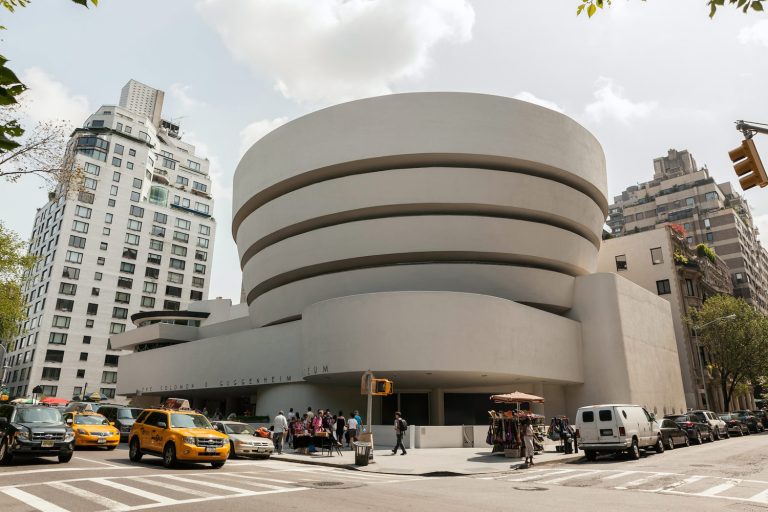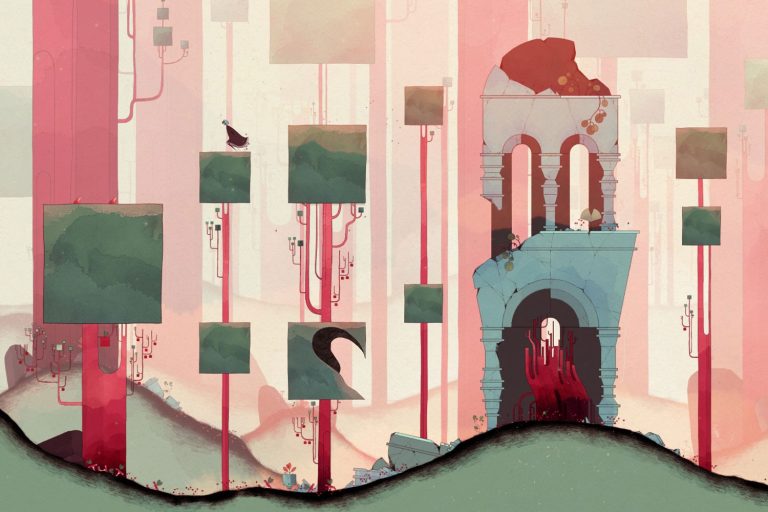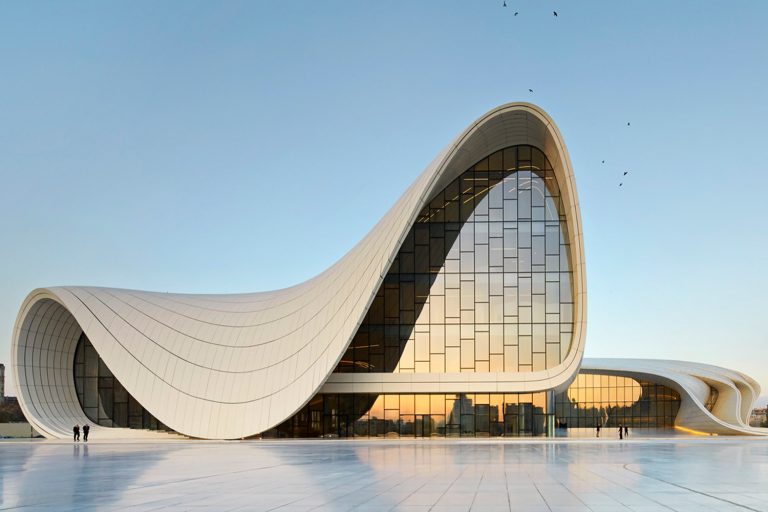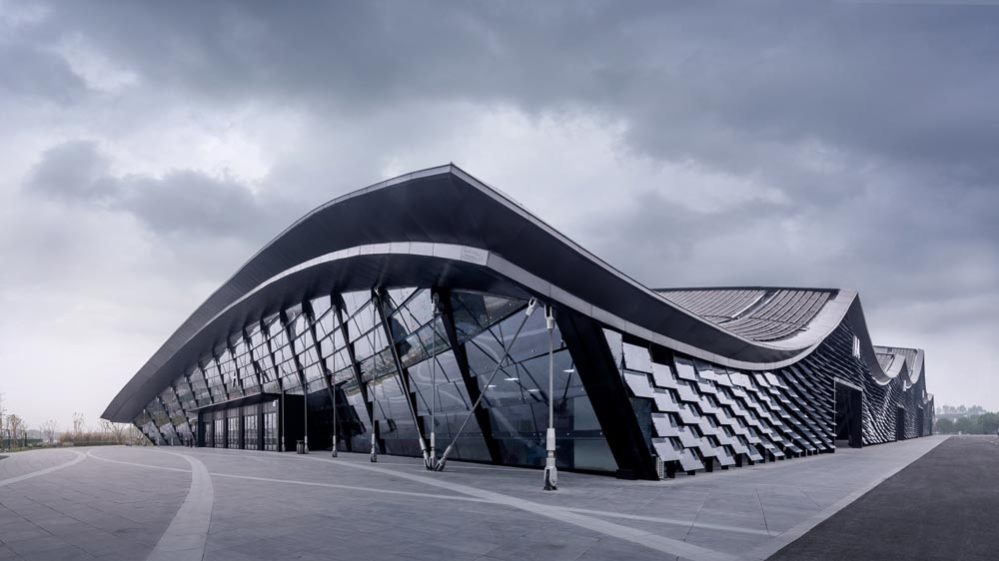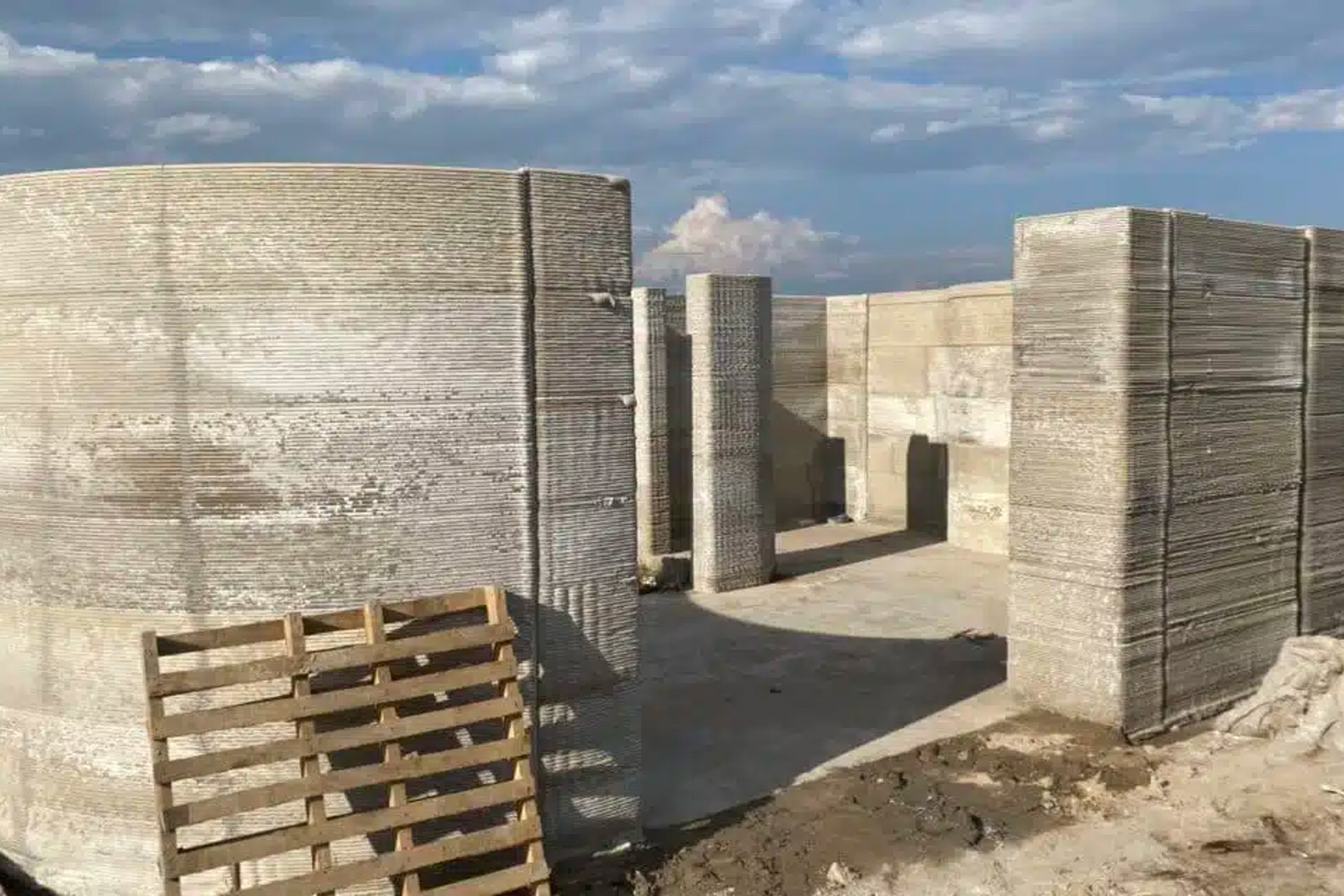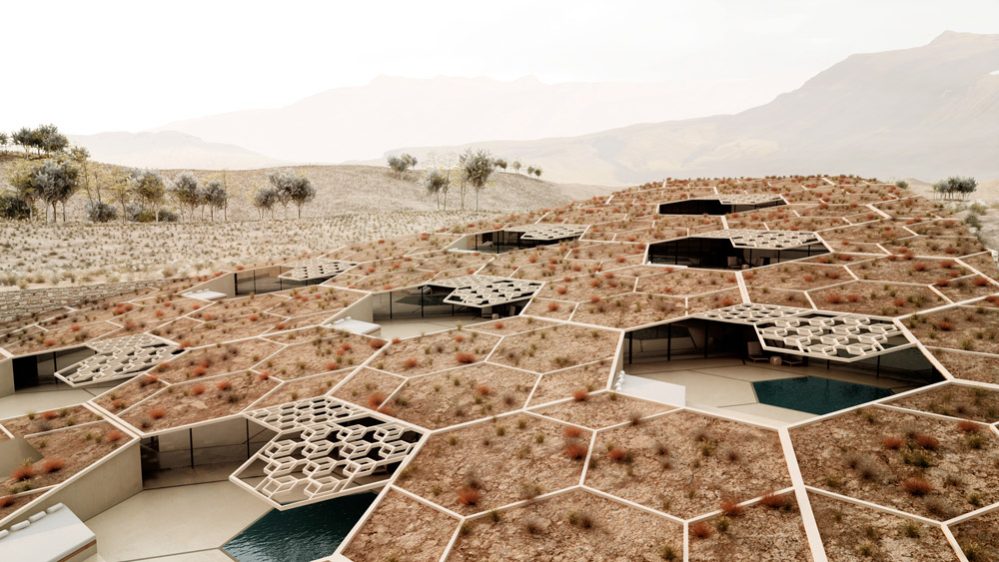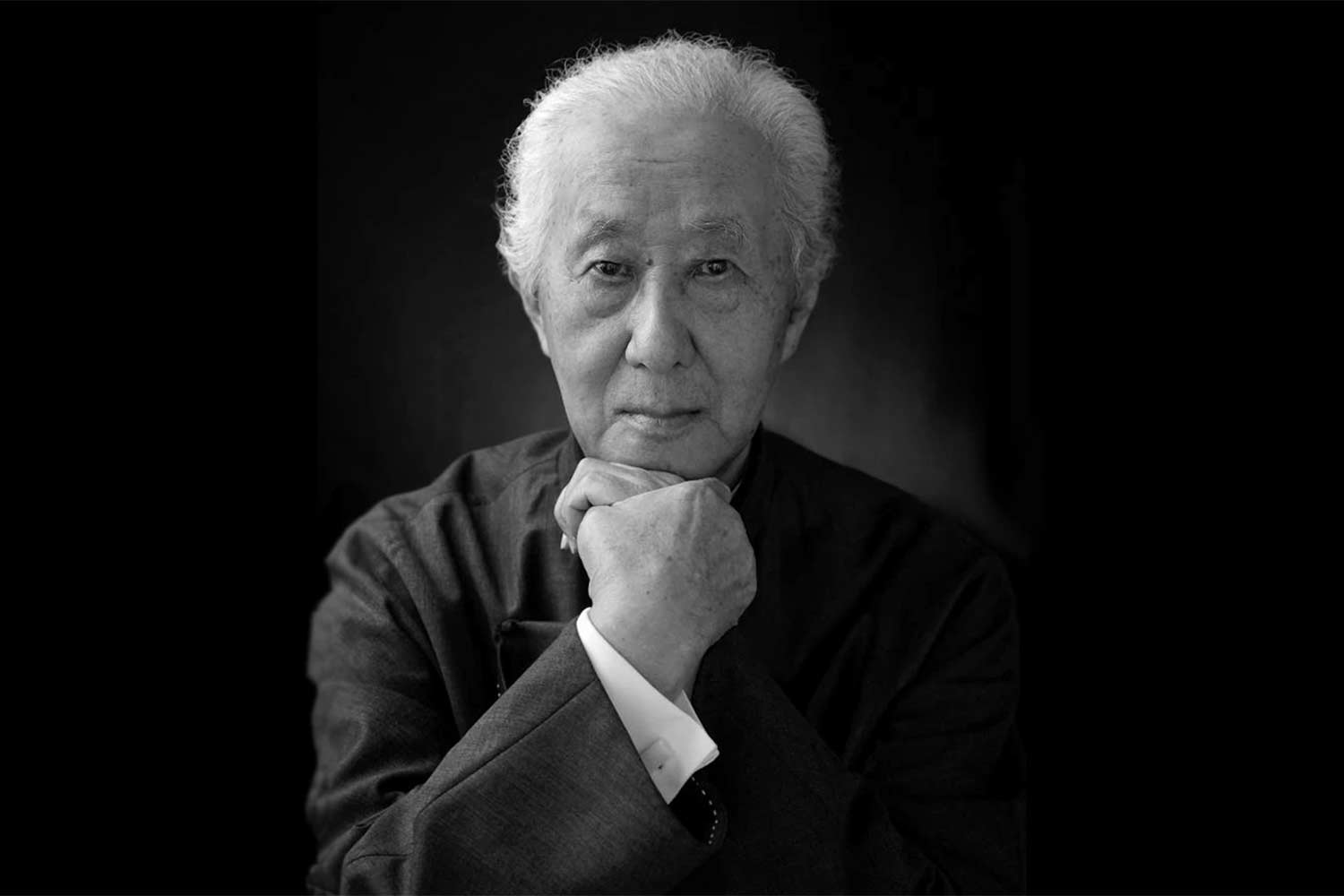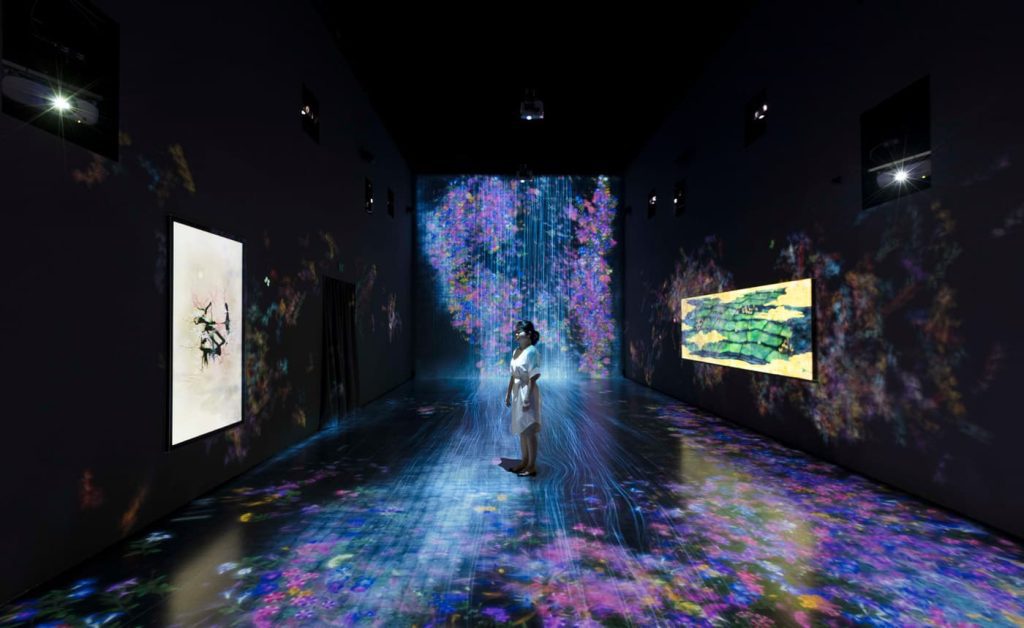
We have discussed many things, from technology to mutual points of games and architecture. But right now, I want to inform our dear readers of something special. This special topic is something that I have analyzed and researched about it. This is more of a philosophy of games, essential of games, and how this philosophy shows similar elements in the digital world, especially similarities in digital or analog installation works from many famous architects. Before jumping into installations, we first have to discuss what a game is and organic and inorganic toys.
Organic and Inorganic Play

Explaining what a game is is a huge topic. It cannot be summarized since games are everywhere, even if we are unaware. Like what? Well, from art to war, there is a game in it. Let’s talk about war. In the military, some ranks determine your role in the military and your special effects. This can be seen as a role-playing game; if you are a General, people expect you to “act” like a General. Also, when we came to the war, there was no difference between a chess play and war. You know how many soldiers and pieces of equipment you have; therefore, you have to design a strategy that will allow you to win the war with minimum loss. Same as chess.
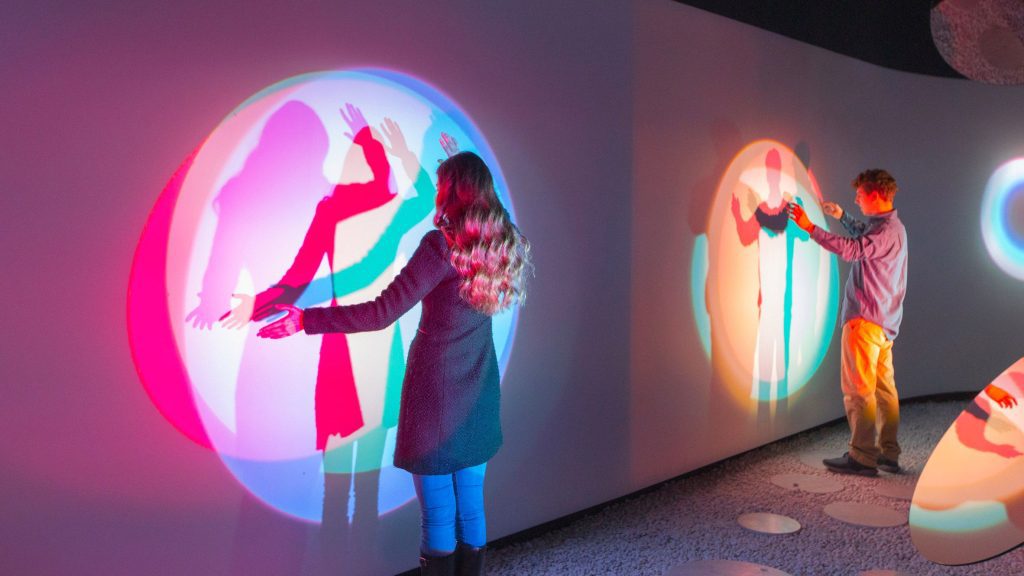
What about art? Let me ask you this, think of any famous artist or sculptor. In that person’s childhood or when he first started to, let’s say, sculptor, did they start to create something majestic? Of course not; they do it becomes they are exploring. They have an intention, and they explore through playing with material playing with canvas. There is a game in art. Friedrich Schiller says that in his “play drive” philosophical concept when a kid starts to enjoy the game and does not understand how time passes, if you start to get the same enjoyment in art, you will not understand how time passes as well. The gamer has no other purpose, just play to play games. The theory explains that this is the main purpose of art. Art, like play, is fictional. Both tend towards the world of dreams. It creates an illusion independent of the outside world. So, the game is a universal concept; it’s not specific to us since we didn’t teach animals how to play.

Let’s get back to organic and inorganic toys. Organic and inorganic toys is a concept developed by Eugen Fink in his book, “Play as Symbol of the World.” Toys are tools for games, and there are two types organic and inorganic. Organic toys are stuff that we find in nature. Like a stick, when a kid finds a stick, they play with it. What about inorganic toys? Well, maybe you already guessed it, toys that we make. Such as dolls.
What makes the difference? Organic toys have multiple purposes; a stick can be a sword or a walking stick. Depends on the users’ imagination. Not just as a toy, it can transform into an item for sitting. So, as you can see, organic toys have a multi-function since our imagination has endless potential.
When we come to inorganic toys, it only has one dimension. If it’s a doll, you can’t add another purpose besides a game related to the family. You can’t switch its role like an organic toy, or you can’t even change its purpose from a toy to another element. However, what makes an inorganic toy is, in its dimension, its own imagination; it is a potent tool. It will let you immerse yourself into your imaginary world more effectively. Therefore, the gameplay and enjoyment will be much better.
New Media & Interactive Art
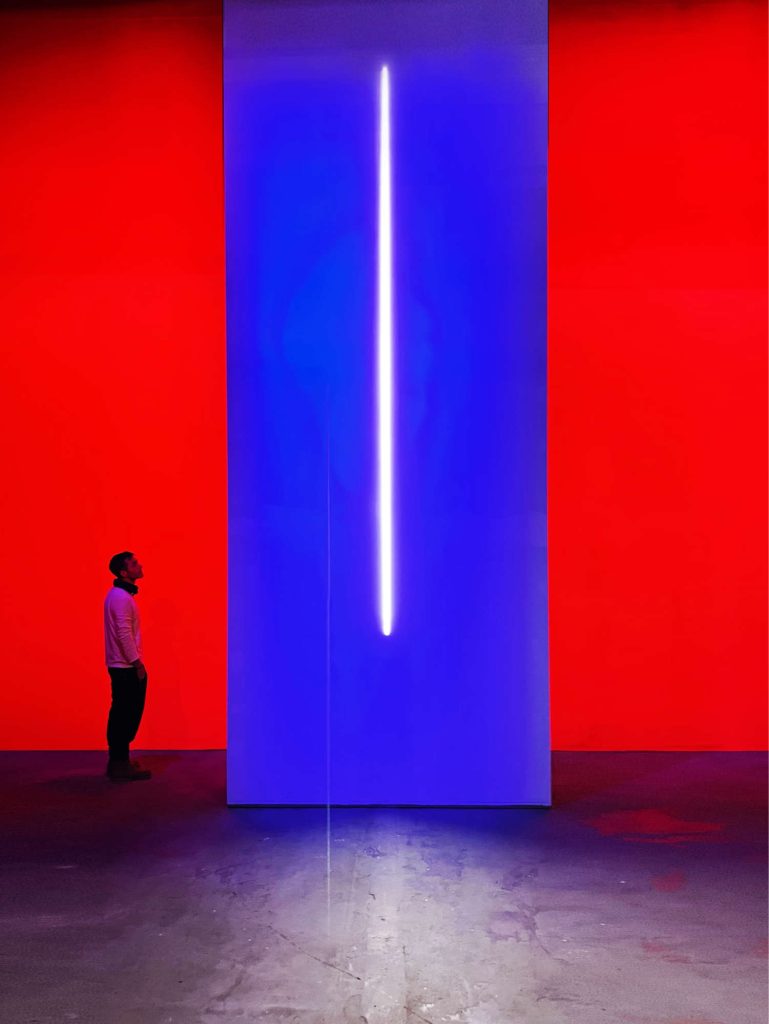
Why am I telling you? In our profession, media architecture has become another opportunity for us. Especially interactive installation in public spaces. Re-connecting people with new media and interactive art. Some of the best examples we can give are Refik Anadol, Es Devlin, Jen Lewin, and many more.
These professions and projects have elements of organic and inorganic play that we are unaware of. The main reason why we are stating these games is not only around the digital world. Architects can design playful areas or installations to create a better community.
The best way to explain it is by giving examples. Therefore, we will analyze the projects of Refik Anadol for organic play and Jen Lewin’s projects for inorganic play. However, this does not determine that Jen Lewin’s works are poorer since they have more inorganic play elements. Do not think that inorganic play is something you should avoid since it has an “inorganic” word; it’s just another element.
Organic Play and Refik Anadol
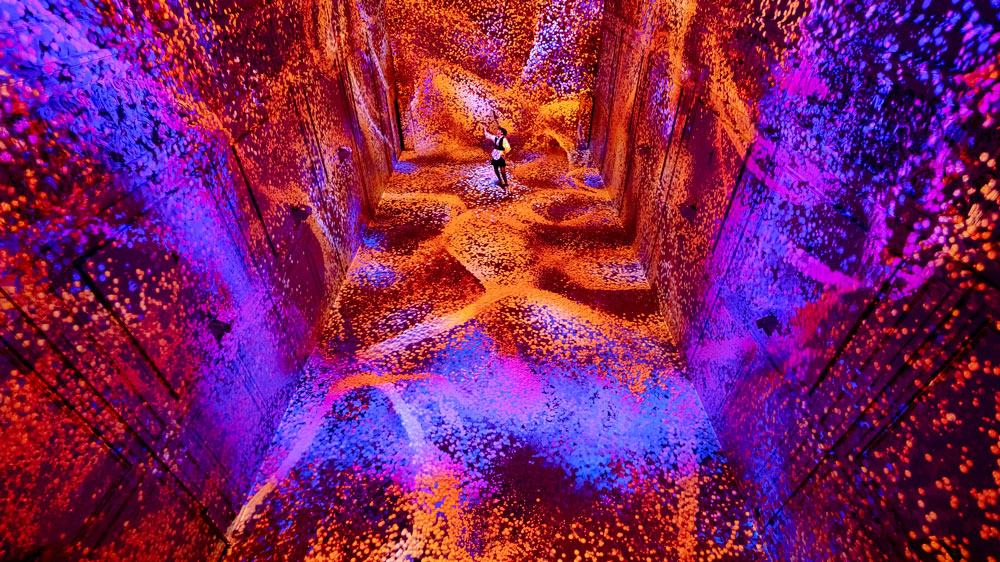
Refik Anadol is a well-known New Media artist. Especially his job about can create a machine, an AI dream, and how it would look. However, we will talk about one of his works, Hope Alkazar. I had the chance to experience his new Installation in Hope Alkazar. In Hope Alkazar, there are two sections in Refik Anadol’s Installation. The part that I want to talk about is the second one, which is an interactive digital installation. In the second part, you can interact with particles on the walls and surface; particles start to explode around when you interact with them. The more you interact with them, like tapping your foot, the more explosions you will get.
The interesting part that I witnessed; people started to challenge themselves to create huge explosions by spinning around. If you kick at a certain angle, particles explode in that direction. Therefore, kids started to play football. Some people tried to make a snow angel on the ground, and others somersaulted or sprinted around to see how particles reacted. Some people even tried to play hopscotch.
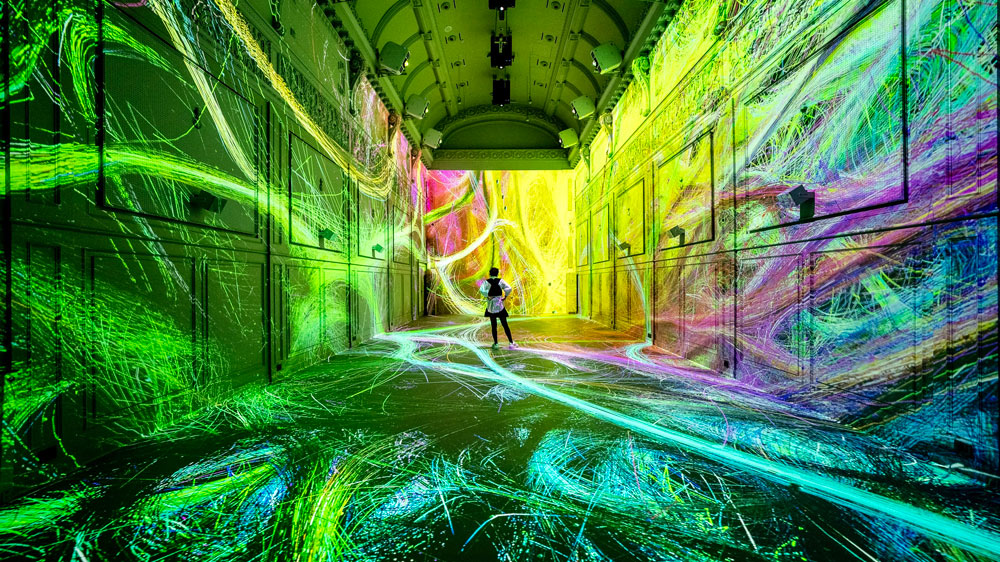
Each game or action that I listed above gave a different reaction to the particles. People started to explore the installation and played with the installation. Since there was flexibility with game and action choices, we can examine that Hope Alkazar has an organic play system. It gave us a simple tool to let our imagination do the work. However, this experience left me with one question in my mind that I want to share. An organic play is called organic because we use elements or materials in nature and give meaning to them, and with the help of our imagination, we play with them. Our world has nature. However, Refik’s work is in the digital world, but the projects have an abstract language. So, what is the nature of the digital world?
Inorganic Play and Jen Lewin
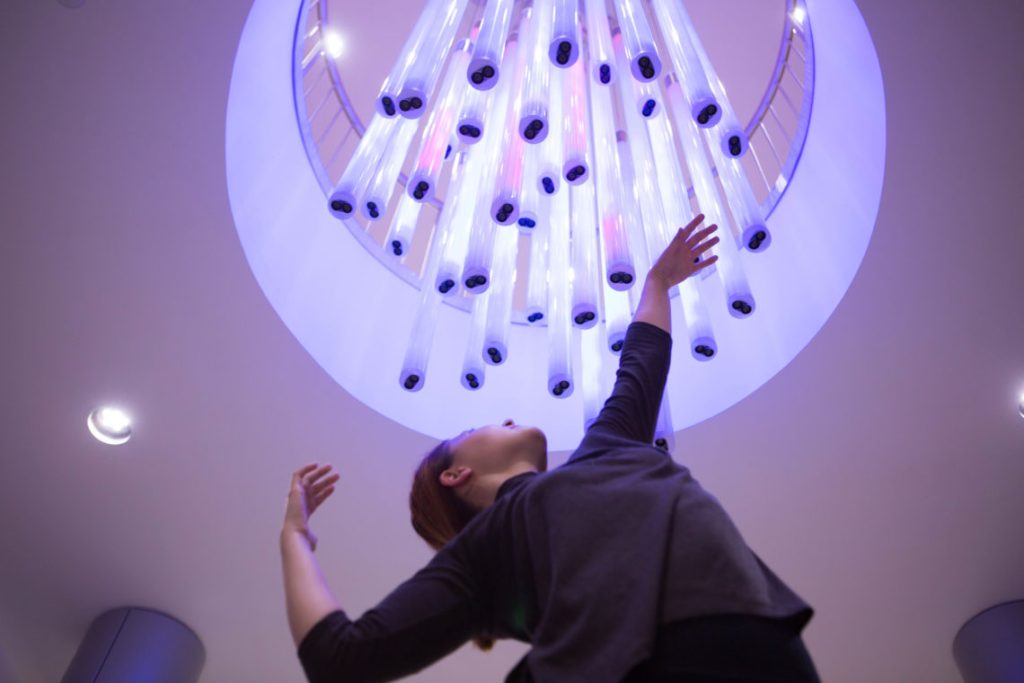
I love her projects; Jen Lewin is an interactive artist and engineer. She uses elements of light and sound and combines them to create an extraordinary experience. Some of her projects allow people to create their own art only with their movement. In my perspective, her projects are proof of Friedrich Schiller’s “Play Drive.” Because a user starts his/her art just for play; however, when that play turns into a “serious game,” then art starts at least from my perspective.
There is one specific project that I want to talk about. Chandelier Harp. In Chandelier Harp, Jen Lewin Studio uses a low-voltage laser that shines from the Chandelier Harp to the surface. Interestingly, the harp will be played if you pass through those invisible lasers. Each laser determines a note from a harp. Therefore, your movement becomes an instrument. People tend to dance under the chandelier; even some try to perform ballet under it to see what kind of melody they create with their movement. So basically, if you dance or play around, your movement will start a piece of music. So, can we say a game starts an art?
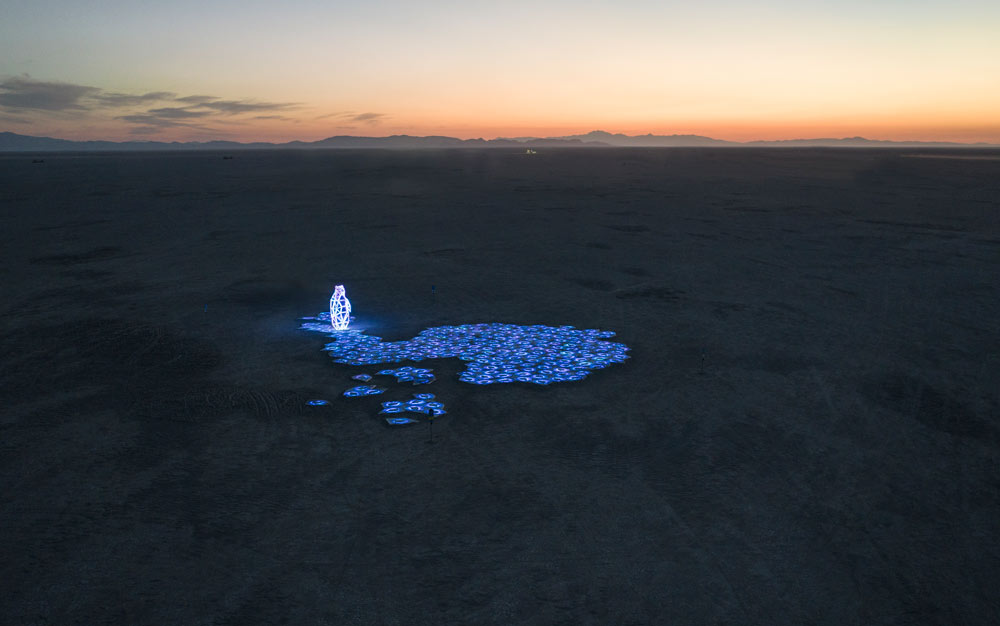
So, what about inorganic play? Since Chandelier Harp is an exquisite experience and project. However, as we tolled with the doll, it only allows you to play in one dimension. It only allows you to explore on movement or dance. There is only one dimension of imagination. However, the experience and enjoyment here are of higher quality and more effective than organic play.
Conclusion
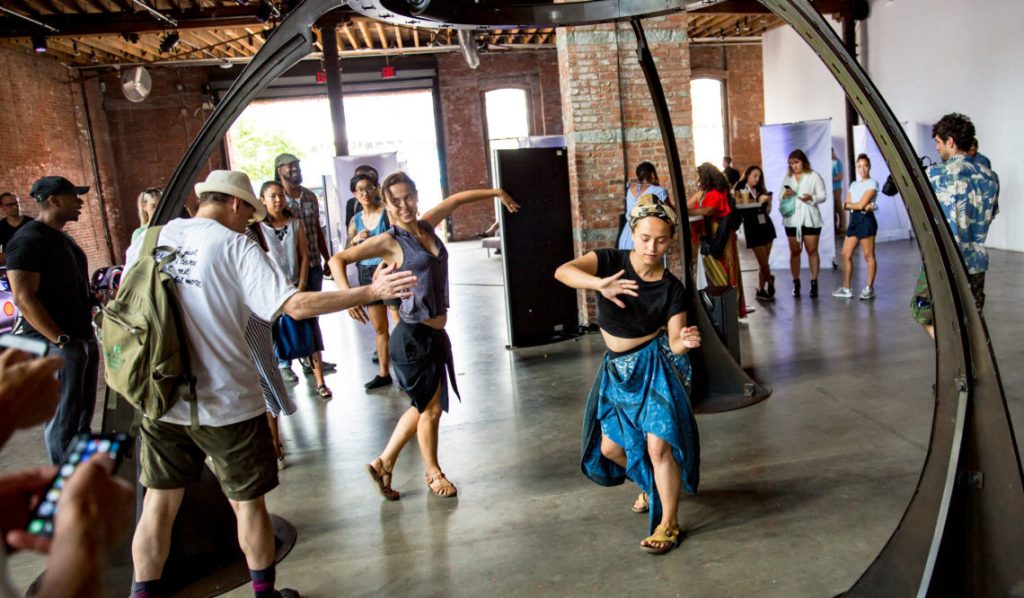
We have analyzed and understood what organic or inorganic play is and how it is connected to the architecture and design field. Games and architecture have deep connections we are unaware of, but we are starting to see them in time. I hope it will help you to look from a different perspective if you are interested in new media and interactive art or if you are going towards that proficiency. Maybe this perspective will help you to design better experiences.
Remember the question I asked about the nature of the digital world? As we have talked, maybe we have looked at the wrong angle. If we want to say organic, which means environment, and inorganic, which means man-made, we need to specify a world, but this world is not the digital world.
Maybe we should specify this world as “technology.” Since digital gives us more space for imagination, and analog technology, like interactive art, gives us a more exquisite experience. Maybe the nature of the technology world is digital, and the man-made part of the technology world is analog. Well, at least that’s my theory; the search continues.




















